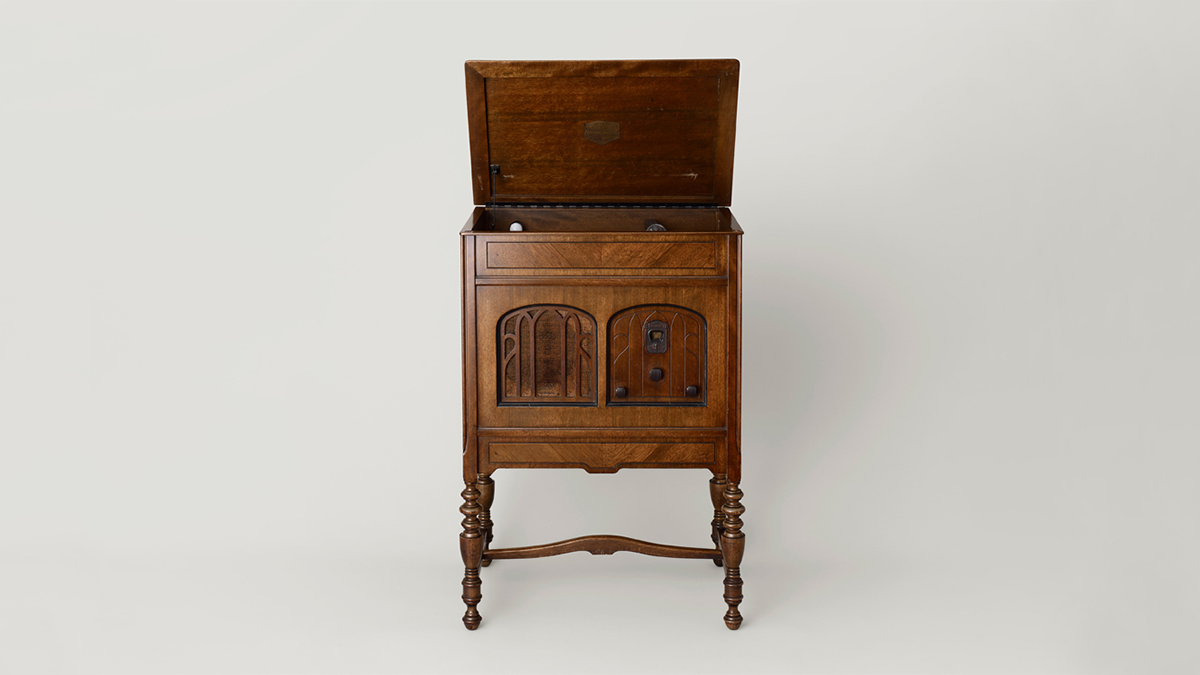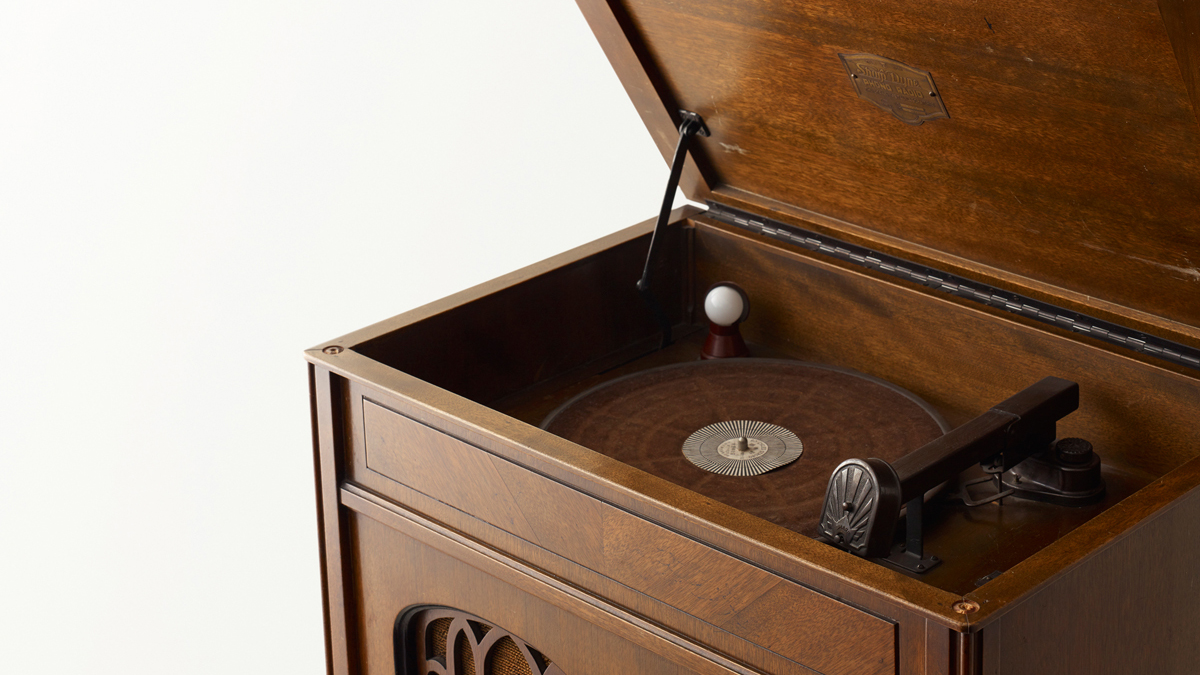IN HISTORY
1934 Phono Radio
“IN HISTORY”: The history of Sharp and design – A joint project with Sharp Technology Innovation Museum commemorating its 40th anniversary
Hello, my name is Fujiwara, and I am from the Sharp Technology Innovation Museum. This is a series in which Sharp Museum guides myself and Nakatani talk about Sharp products and history. I hope this will be an opportunity for you to get you interested in Sharp’s history.
Today, I would like to talk about “Phono Radio,” a radio phonograph manufactured in 1934.
Calm appearance with a sense of presence…
Handcrafted 88 years ago, “Phono Radio” (a radio phonograph) is a radio that is 83 cm tall, 58 cm wide, and 38 cm deep, with a record player on top.

A pleasure to own and a joy to love
Electric phonographs were more commonly known as phonographs, and the word “phonograph” may remind you of the hand-cranked phonographs seen in old movies, but this is indeed an electric phonograph. While radios and phonographs brought from Europe and the U.S. to Japan were developed and improved in various ways by Japanese craftsmanship, such as miniaturization, price reduction, design, and functionality, these phonographs were owned and displayed by wealthy people, department stores, coffee shops, violin stores, and other places as luxury items that were loved for their elegance.
The wooden cabinets with their painstaking finish are impressive. More than a few visitors to the museum have asked, “Is this wood mahogany?” Unfortunately, almost no information about electric phonographs of the period has survived the ravages of time, and the material of the cabinet is no exception. We cannot be certain, but based on the records of a Japanese instrument manufacturer and the reddish-brown color of the wood grain, we believe that it is most likely mahogany (a relatively soft and textured wood used in the production of musical instruments and furniture at the time).
Of course, the radio and record player on top were made in-house (branded as Sharp Dyne). This record player, which we are immensely proud of, was enclosed in a high-quality, elegant wooden cabinet and furnished by craftsmen who made musical instruments and furniture. The few remaining photos of the Sharp Dyne phono radios of the period show the wonderfully different craftsmanship of each product in the range, and they all look good.
Design drawings were prepared for each product, and craftsmen competed with each other in engraving and machining techniques to create the Phono Radio. The fusion of technology and art created a product that is worth loving.

 DNA that is constantly pursuing change
DNA that is constantly pursuing change
While searching through Sharp Dyne’s archives, I came across the last remaining booklet.
This booklet was probably sent to our dealers in 1932 when our company name was Hayakawa Metal Works. Although it is somewhat difficult to decipher the language used at that time, we have converted some of it into language used today to introduce it here.
“Modern man is always in search of contradiction and change. While society seeks results from the simplest paths, it also expects results from the most-complex and most-varied paths.”
Put simply, it speaks to the contradiction that people and society today are always looking for easy and simple results but also have great interest in things that change in a very complex way, and it says that people inherently enjoy and expect change.
Even 88 years ago, when this electric phonograph was made, people’s desire to constantly pursue change has continued to produce designs and new technologies of that time.
The soothing sound of vinyl records
Audio technology has evolved into digital technology in the quest for the ultimate in interference-free, crystal-clear sound reproduction…
However, the sound of analog vinyl records, with its slight skips and crackly sounds, soothes our hearts and minds. In today’s digital age, isn’t it nice to hear the sound of vinyl records?
The warmth of wood and craftsmanship flowing from such beautiful furnishings makes me want to spend a relaxing moment immersed in the sound of vinyl records that start with a crackle.

That’s it for now! Next time, we will introduce the RE-2 Capsule Microwave Oven, a unique cooking appliance that was launched during the Japanese asset price bubble in the 1980s.
[Sharp Museum: Commemorating its 40th anniversary in November 2021]
This is a series written by Sharp Technology Innovation Museum guides Fujiwara and Nakatani about Sharp products and history. We hope this will be an opportunity get you interested in Sharp’s history.